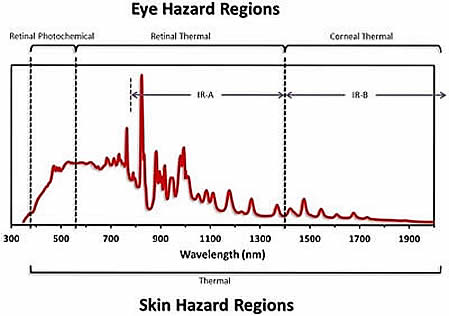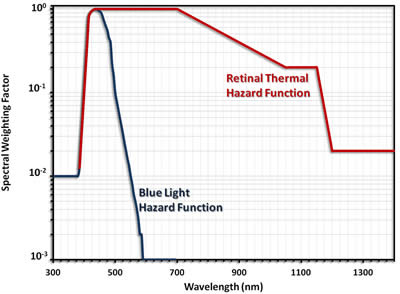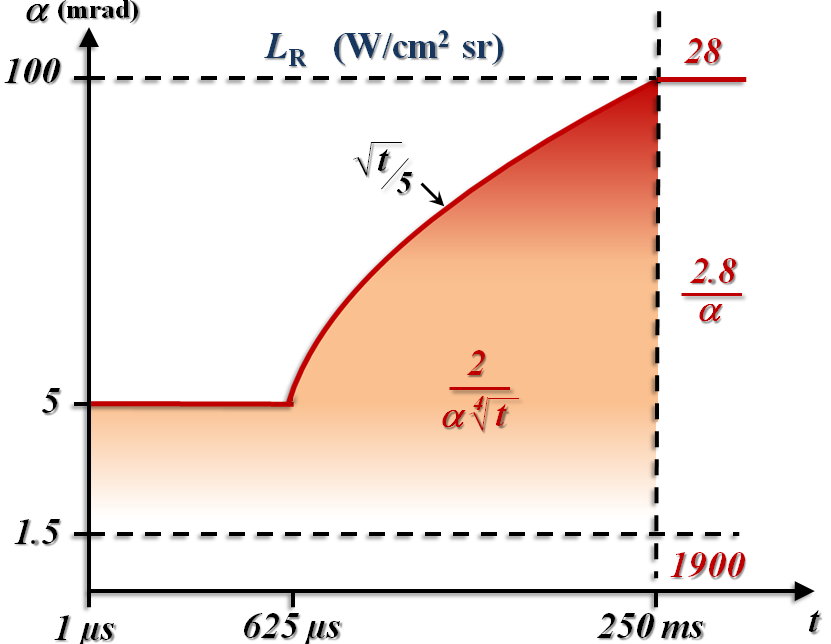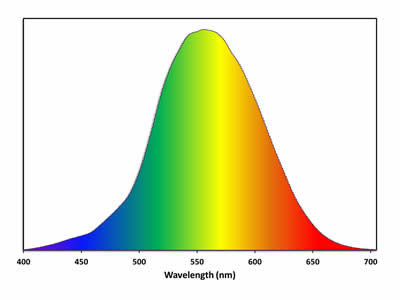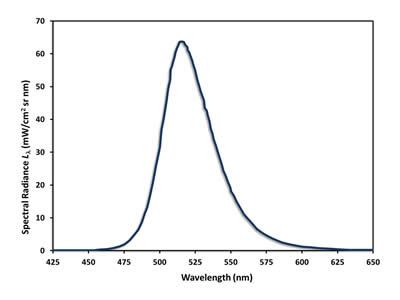To get the actual emission curve, the normalized emission curve and the luminous efficiency function were placed into an spreadsheet program, each with a 0.1 nm wavelength resolution. Taking the total integral (multiplying the columns together and then summing that column), a value of 21,453 was calculated. The expected luminous flux was 700 lm; therefore, a scaling factor of 30.65 (21,453/700) removed the normalization (assuming the instrument used to gather this spectrum had a flat spectral response).
With the normalization removed from the spectrum, integrating the spectrum alone over wavelength (summing the spectrum column) and dividing by the scaling factor gives the optical power emitted into this portion of the visual spectrum of 1.50 W.
Back of the envelope: To check this calculation, note that at the 515 nm peak we have an ocular response of 62.5 % (see Figure). For 700 lm at 515 nm, this luminous flux would correspond to 1.64 W (within 10 % of our calculation).
Our calculated 1.5 W is converted into radiance by dividing by the die area and by half of the solid angle of its half-maximum emission. The area is straight-forward; as for the solid angle, half of the 95 ° planar angle converts to 2.04 steradians (sr).
The total radiance of this source is 2.9 W/cm2sr giving us the spectral radiance (radiance as a function of wavelength) as shown in the figure above to be used for the hazard evaluation.
Hazard evaluation
Now we can assess the retinal thermal hazard and retinal photochemical (blue-light) hazard. Multiplying the spectral radiance curve above by each of the ocular hazard functions (second figure on this page), we get an effective thermal radiance of 2.9 W/cm2sr and an effective blue-light radiance of 180 mW/cm2sr.
Retinal thermal hazard
Looking at the retinal thermal exposure curve, for exposure durations longer than 250 ms, the exposure limit is 2.8/α W/cm2sr where α is the angular size of the LED at the evaluation position, if the source subtends a planar angle between 1.5 mrad and 100 mrad. The worst-case distance for a hazard evaluation is 20 cm, and a 5 mm x 5 mm die at normal incidence would subtend a planar angle of 25 mrad making the effective allowed radiance for this source 100 W/cm2sr. This example would not be a retinal thermal hazard.
Photochemical hazard
The blue-light photochemical exposure limit shows the total allowed dose within a couple of hours to be 100 J/cm2sr. For a source emitting 2.9 W/cm2sr, it would take over 9 minutes to reach this dosage.
